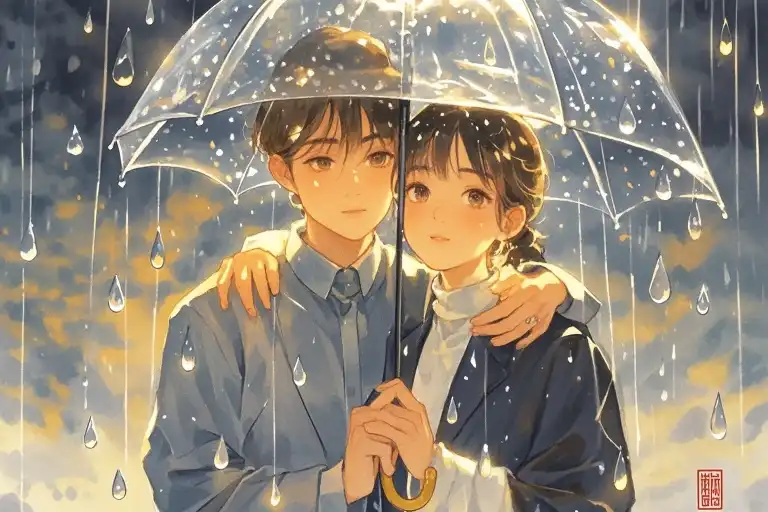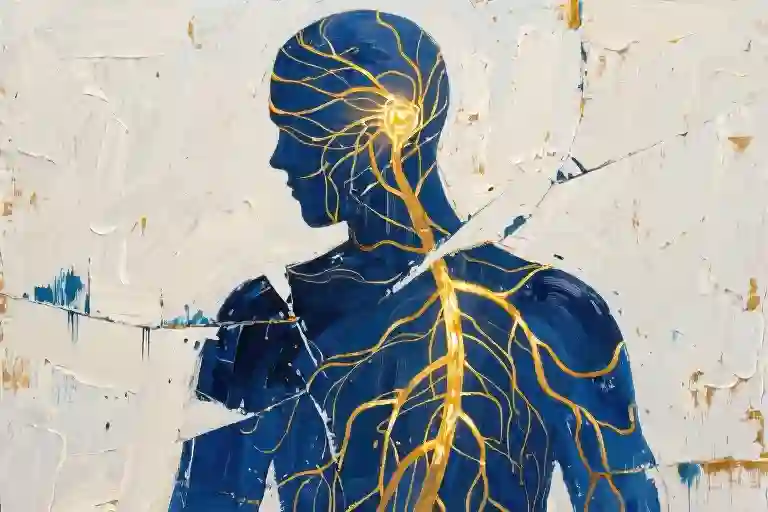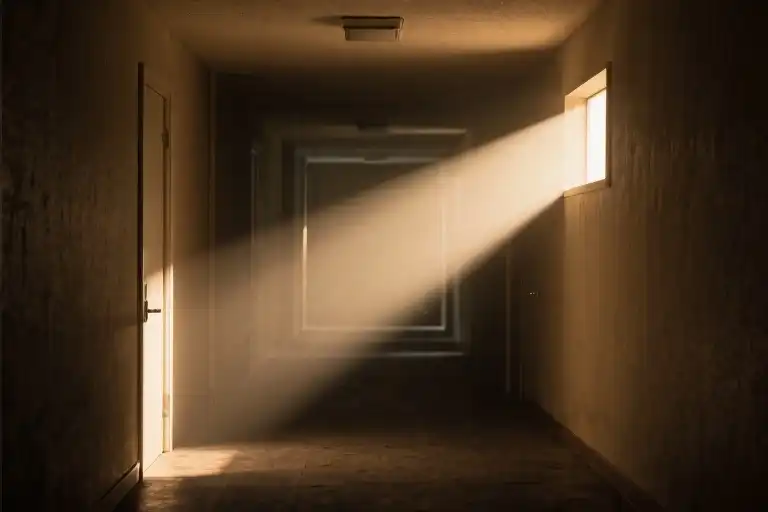The cracked phone screen still lights up at 2:37 AM when I accidentally brush against it. That spiderweb of fractures obscures half his face in the lock screen photo – my son mid-laugh at some forgotten joke, now permanently pixelated. My thumb hovers over the notification that came two hours before he stepped off the roof. The last message I’ll never open.
This leather couch in my office has held so many broken people. I know every stain – the coffee spill from the divorcing CEO, ink smears where a teenager clawed at intake forms. Tonight it cradles a different kind of wreckage. The therapist becomes the patient becomes the grieving father counting ceiling tiles instead of sheep.
‘Please,’ I whisper to nobody, fingers tracing the phone’s jagged edges, ‘take me somewhere this isn’t true.’ The words surprise me. They’re the same plea I’ve heard from clients drowning in their private hells – the cancer patient begging for any reality but scans, the veteran offering his pension for one night without firework-triggered flashbacks. Now the professional detachment I’ve worn like a lab coat lies in shreds at my feet.
Outside, a garbage truck beeps its reverse warning. The sound triggers an absurd memory: my son at five, convinced those white backup lights were secret police signals. His elaborate conspiracy theories used to make me chuckle during supervision sessions. Now the memory lodges like broken glass in my throat.
I rotate the damaged phone in my hands. The cracks radiate from one impact point near the power button. Physics says this is where the concrete kissed plastic first. My brain helpfully supplies the terminal velocity calculations for a six-story fall. All those years of clinical training never covered how to stop a father’s mind from compulsively reconstructing his child’s final seconds.
On the bookshelf, my EMDR certification gleams under the desk lamp. The irony tastes metallic. I’ve guided hundreds through traumatic memories using those light bars and bilateral tones. But nobody teaches you how to process the ultimate therapeutic rupture – when death cancels all future sessions, when the file closes not with discharge papers but an urn.
The phone dims. For three breaths I consider letting the battery die. Instead, I tap the screen awake again. That fractured smile mocks my professional toolkit. Grief isn’t a DSM code to be treated with cognitive restructuring. No amount of thought records can fix this.
Somewhere in the building, a toilet flushes. The mundane sound anchors me briefly. This is still my office, still Tuesday (or is it Wednesday?), still a place where people come expecting me to have answers. The cognitive dissonance makes me lightheaded – how can the world keep functioning when mine has cratered?
I reach for the notepad where I scribble client insights. The top page holds yesterday’s session notes: ‘Client reports decreased suicidal ideation after implementing safety plan.’ My pen hovers, then writes something far less professional: ‘I would trade every degree on my wall for five more minutes of his voice.’ The raw confession shocks me. Is this what my clients felt when they finally voiced their unspeakable truths?
The AC kicks on, blowing the page sideways. Underneath lies a drawing from last week’s child client – stick figures labeled ‘Dr. K and me.’ Suddenly I’m split-screen: the therapist noting artistic progress in gross motor skills, the father remembering similar fridge art from twenty years ago. The duality threatens to crack me open like the phone screen.
When the first tear hits the notepad, it blooms across the ink in a Rorschach blot. I stare at the shape, half-expecting some Freudian revelation. Instead I hear my own voice from countless sessions: ‘Tears are just your body’s pressure release valve.’ The clinical observation now feels laughably inadequate.
Through the window, dawn bleeds into the sky. The garbage truck moves to the next block. My pager remains silent – no midnight crises needing intervention tonight. Just this ordinary, unbearable awakening where I must decide whether to cancel today’s clients or pretend I can still help anyone.
The phone screen goes dark again. This time I don’t revive it. Some fractures can’t be mended, some data shouldn’t be retrieved. I place the device carefully in the desk drawer beside spare pens and paperclips – ordinary objects in an office that no longer feels like mine.
Autopsy Report: Symptoms of Death While Living
The stethoscope slides off my wrist like a dead snake. It’s been two months since I last took a proper pulse – mine or anyone else’s. The clinical depression checklist mocks me from the coffee-stained desk, its twelve bullet points glowing like neon signs in my peripheral vision:
- Persistent sad, anxious or “empty” mood
- Loss of interest in activities once enjoyed
- Fatigue and decreased energy
- Difficulty concentrating
- Changes in appetite or weight
- Sleep disturbances
- Physical symptoms without clear cause
- Feelings of worthlessness
- Recurrent thoughts of death
- Irritability
- Social withdrawal
- Indecisiveness
I score twelve for twelve. Perfect marks in the curriculum of grief. My medical license hangs crooked on the wall, its gold seal reflecting the afternoon light onto the unopened bottle of Zoloft. The irony isn’t lost on me – the psychiatrist who prescribed antidepressants to half the town can’t bring himself to swallow his own.
The Social Autopsy
They come in waves, the well-meaning verbal autopsies:
“He’s in a better place now.” (As if any place without my child could be better)
“Time heals all wounds.” (Tell that to the phantom limb still reaching for his shoulder)
“Be strong for your family.” (Strength left with the coroner’s van)
“Everything happens for a reason.” (Show me the reason and I’ll show you a god who needs firing)
“At least he’s not suffering anymore.” (The suffering just transferred ownership)
“You’ll get through this.” (Through implies an other side I no longer believe in)
“Let me know if you need anything.” (I need my son breathing – can you arrange that?)
Each platitude lands like a poorly placed suture, tearing at the edges of what’s trying to heal. I keep a mental tally in the margins of my grief – seven categories of linguistic violence dressed up as comfort.
The Museum of Absence
His bedroom has become an archaeological site. Every artifact carries its own weight:
- The sneakers by the door, still holding the shape of his feet. The left shoe’s frayed lace whispers about the morning he rushed to school without double-knotting them.
- The prescription bottle in the medicine cabinet, its childproof cap intact. The pills rattle like dice that never got rolled.
- The student ID that arrived three weeks after the funeral. The university’s automated system didn’t get the memo, so it cheerfully informed us his campus dining balance had been deactivated.
These objects form their own diagnostic criteria – a parallel DSM for the left behind. The shoelaces measure time differently now. Each fiber counts the days since I last heard “Dad, where’s my…” The pill bottle ticks like a metronome set to the rhythm of “what if.” The plastic ID card burns colder than dry ice against my palm.
I catch myself performing nonsensical rituals – sniffing the inside of his baseball cap like some grief-stricken bloodhound, holding his toothbrush under running water just to watch the bristles move. The rational part of my brain (what little remains) knows these are textbook trauma responses. The rest of me couldn’t care less about textbooks.
At night, I lie awake diagnosing myself with conditions that don’t exist in the medical literature:
- Reverse Cotard’s delusion: The certainty that while I’m technically alive, the best parts of me were buried in a mahogany box on a Tuesday afternoon.
- Parental phantom limb syndrome: The sensation of his hand in mine when reaching for groceries in aisle three.
- Temporal dislocation: The inability to distinguish between two minutes and two centuries since I last saw his face.
The digital clock by my bed flashes 3:17 AM in poisonous green. Somewhere between the seventeenth and eighteenth time checking it, I realize I’ve become both the doctor and the patient in this endless rounds of grief.
The Museum of Unhelpful Help
Exhibit A: When Standardized Forms Fail
The clipboard feels heavier than it should when they hand it to you. PHQ-9, GAD-7, those familiar acronyms printed on crisp paper that crinkles under your grip. You’ve administered these assessments yourself countless times – checking boxes about sleep disturbances and loss of interest, assigning numerical values to human suffering. Now the pencil hovers over question #4: “Thoughts that you would be better off dead?” and suddenly the clinical distance evaporates.
What the forms can’t capture:
- The way grief physically reshapes your organs (your lungs now concrete, your stomach a wrung-out dishrag)
- The supermarket cereal aisle becoming a minefield when you see his favorite brand
- The cruel arithmetic of suicide loss (two months = sixty days = 1,440 hours of your child not existing)
Exhibit B: The Hall of Hollow Comfort
Behind glass displays, the well-intentioned phrases hover like preserved specimens:
“He’s in a better place now”
Label: Contains 0% actual comfort, 100% theological presumption
“Time heals all wounds”
Caution: May cause survivors to question their “abnormal” grieving timeline
“Let me know if you need anything”
Interactive element: Press the button to hear seven variations of “I don’t know how to ask”
The most popular exhibit shows a looping video of faces morphing from concern to discomfort when you mention suicide. Visitors can try the “Change the Subject Challenge” – how quickly can you steer conversation back to weather forecasts?
Interactive Installation: The Helpfulness Generator
Spin the wheel to create your own ineffective comfort cocktail:
- Select a base:
☐ Religious platitude
☐ Toxic positivity
☐ Unsolicited advice - Add mix-ins:
☐ Personal anecdote about your cousin’s neighbor’s recovery
☐ Minimizing comparison (“At least…”)
☐ Armchair diagnosis - Choose delivery method:
☐ Text message with praying hands emoji
☐ Whispered aside at family gathering
☐ Facebook post tagging you in “inspirational” memes
The machine prints your custom unhelpful comment on receipt paper that dissolves in tears.
Near the exit, a small handwritten note pinned to the wall: “Sometimes the most therapeutic words are ‘This sucks and I’ll sit here with you in the suck.'” Few visitors notice it beneath the flashing exhibits of quick fixes.
Fantasy Emergency Room
The graveyard fantasy comes first, as it always does. Not the manicured cemeteries with floral arrangements and marble headstones, but the overgrown ones where nature reclaims its territory. I imagine lying face-up between two unmarked graves, the damp earth seeping through my clothes. Squirrels would mistake me for part of the landscape—their tiny claws pricking my skin as they scramble across my chest, searching for buried treasures beneath the oak trees.
This isn’t morbid fascination. Clinically speaking, it’s my psyche’s attempt to solve an impossible equation: how to be simultaneously present and absent. The fantasy offers temporary residency in that liminal space where grieving parents hover—not fully alive, not yet dead, but somewhere in the quantum superposition of both states.
Bed 1: Graveyard Fantasy Analysis
Death Drive Assessment:
- Primary Motivation: Seeking proximity to the lost child (symbolic reunion through shared ‘location’)
- Secondary Gain: Suspension of grieving responsibilities (bank statements, laundry, obligatory social interactions)
- Hidden Mechanism: Testing personal mortality thresholds without active self-harm
Physiological Correlates:
When visualizing this scenario, my prefrontal cortex shows decreased activity while the posterior cingulate cortex lights up—the same neural pattern observed in meditation practitioners achieving ’emptiness’ states. The body becomes terrain rather than identity.
Bed 2: Casino Neurochemistry
The slot machines’ symphony—coins clattering, electronic fanfares, the mechanical whir of spinning reels—creates a perfect dopamine delivery system. Unlike antidepressants with their delayed timelines, here the reward circuits fire immediately: pull lever → possible win → instant chemical relief.
Addiction Pathways Activated:
- Dorsal striatum (habit formation)
- Ventral tegmental area (reward anticipation)
- Orbitofrontal cortex (risk/reward calculation)
What makes this fantasy particularly seductive is its mathematical honesty. The house always wins, yes, but the odds are clearly printed on every machine. Grief offers no such transparency—no way to calculate when or if the pain might lessen.
Treatment Notes: Transmuting Escape Fantasies
Creative Conversion Protocol:
- Graveyard Adaptation: Instead of lying passively, plant native wildflowers around neglected graves (channeling death energy into ecological restoration)
- Casino Adaptation: Use poker chips as tactile grounding tools—assign values to different coping mechanisms (blue chip = call a friend, red chip = write unsent letter)
Contraindications Observed:
Traditional ‘replace negative thoughts’ CBT approaches fail spectacularly with these fantasies. The psyche rejects cheap substitutions. Only transformations preserving the fantasy’s core emotional logic show efficacy.
Progress Metric:
Last week, the graveyard fantasy lasted 47 uninterrupted minutes. Yesterday, it fragmented after 18 minutes when I noticed dandelions growing through a crack in the imagined tombstone. This constitutes improvement—the intrusive fantasy’s architecture is developing permeable boundaries.
The Paradox Prescription
When patients present with similar escape fantasies, I now prescribe structured indulgence:
- Schedule 20-minute ‘casino breaks’ using a phone app that simulates slot machines
- Visit actual cemeteries with specific missions (locate the oldest birthdate, photograph interesting epitaphs)
- Keep a ‘fantasy ledger’ tracking emotional before/after effects
The goal isn’t eradication but domestication—training these mental escape routes to serve rather than enslave. Like converting abandoned railroad tracks into hiking trails, we repurpose the infrastructure of despair.
The Dark Survivors’ Alliance
The crumpled train ticket in my pocket has been missing for three days now. I know exactly where I left it – on the edge of the bathroom sink, beneath the half-empty bottle of melatonin. The deliberate carelessness feels like rebellion against a world that demands meticulous grieving. This is my application to the Dark Survivors’ Alliance, where we practice the art of strategic loss.
Membership Ritual: The Paradox of Letting Go
Throw away something important today. Not your wedding ring or his baby photos – start smaller. The grocery list with his favorite cereal still written in your handwriting. The receipt from the last movie you saw together. Watch how the world doesn’t end when that scrap of paper disappears into the recycling bin. Psychologists call this ‘exposure therapy’, we call it ‘practicing for the big losses’.
I lost my keys three times last week. Each disappearance felt like a tiny death, until I realized these were controlled burns – training my nervous system to understand that not all losses are catastrophic. The DSM might diagnose this as ‘dissociative behavior’, but we know better. This is how we rebuild tolerance for existence, one missing sock at a time.
Privileges of Membership
Your membership card doubles as an ‘Unreasonable Grief’ license. Present it when:
- Someone suggests you should be ‘moving on’ by now
- Well-meaning coworkers ask if you’ve considered volunteering
- Your mother mentions her friend’s daughter who ‘bounced back’ after her divorce
This license grants you permission to:
- Cry in the cereal aisle when you see his favorite childhood breakfast
- Keep his toothbrush in the holder until you’re ready
- Tell optimistic relatives to fuck right off (diplomatic edition available)
Covert Operations
Today’s mission: Go to the supermarket floral section. Buy the most extravagant bouquet you can find – the kind with tropical birds of paradise and orchids that cost more than your weekly grocery budget. Place it in your cart next to the frozen dinners you’ll eat alone. When the cashier asks ‘Is this for a special occasion?’, tell the truth: ‘No, it’s for no reason at all.’
This isn’t frivolity – it’s neurological warfare. You’re tricking your reward system into remembering that beauty exists. Those garish orange lilies? They’re biohazard containers for radioactive grief. The baby’s breath filler? That’s shrapnel from the bomb that went off in your life. Arrange them in a vase where his school photo used to sit.
Survival Gear
- The Getaway Car: Keep an emergency kit in your glove compartment containing:
- Sunglasses that hide puffy eyes
- A list of 24/7 crisis lines (laminated against tears)
- A single casino chip from that weekend in Vegas when life still made sense
- Stealth Armor: When strangers ask how you’re doing, we authorize these responses:
- ‘Surviving’ (with optional shrug)
- ‘Some days are diamonds’ (let them assume there are diamond days)
- ‘Ask me again in a decade’
- Weapons Cache:
- Screenshots of texts you’ll never send
- Playlists that match your exact emotional frequency
- The ability to disappear into a crowd while still being seen
We meet in the liminal spaces – parking lots after support group meetings, all-night diners at 3am, online forums where usernames hide bloodshot eyes. There are no attendance sheets or secret handshakes. You’ll recognize fellow members by the way we hold our coffee cups a little too tightly, how we stare just a beat too long at playgrounds. Our membership dues are paid in phantom limbs and half-heard voicemails.
Tomorrow’s assignment: Wear mismatched socks. Not as a fashion statement, but as a quiet fuck you to a universe that insists on order and meaning. Leave your umbrella at home when it rains. Let the weather have its way with you for once. These are our small insurrections against the tyranny of ‘getting better’.
You are now cleared for irrational floral purchases and strategic forgetfulness. Welcome to the resistance.
When the Lights Go Out
The slot machines still hum their electronic lullabies when the power cuts. My fingers freeze mid-air above the spin button, the credits counter blinking 12:07 AM in toxic green. Somewhere beyond the casino’s oxygen-starved air, a desert cricket chirps. Its rhythm syncs with the exit sign’s emergency pulse.
This is how reality reclaims you – not with grand revelations, but through the mundane rebellion of biology. My phone vibrates against the felt table, displaying a reminder I set months ago: “Jason’s orthodontist – 11 AM.” The dead don’t need braces, but the living remain hostage to calendars.
Today’s Survival Permit
You’re authorized to:
- Misplace something important – Car keys in the freezer, wallet behind the cereal boxes. Let the universe shoulder some responsibility.
- Violate a grief rule – Eat dessert first. Wear mismatched socks. Your mourning doesn’t require good manners.
- Collect one absurd beauty – The way elevator buttons glow like candy, how pigeons argue over pizza crusts.
This permit expires at midnight. No renewal necessary.
When the darkness feels physical – Crisis Text Line: Text HOME to 741741 (US/UK/Canada) – International Association for Suicide Prevention: – Suicide Loss Support Group Directory: The cocktail waitress reappears with my untouched whiskey. “Light’s back on,” she says, nodding toward a newly illuminated roulette table. But I’m already walking toward the exit, the cricket’s song now audible through automatic doors sliding open into desert night. Somewhere between the parking lot and my car, I realize I’ve left my jacket draped over the stool. Let the casino keep it.





